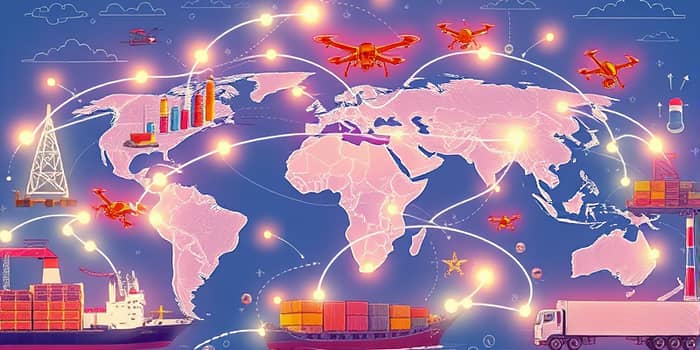
In today's dynamic market, businesses face unprecedented challenges and opportunities in managing their supply chains. Effective optimization is no longer a luxury—it is a necessity for companies aiming to thrive.
By embracing innovative strategies and cutting-edge technologies, organizations can maximize overall operational efficiency and secure a competitive edge.
Supply chain optimization is the deliberate process of refining every link in the supply chain to reduce operational costs significantly. This encompasses strategic sourcing, demand forecasting, inventory management, production planning, logistics coordination, and data-driven decision-making. By aligning these core activities, companies can operate with greater precision, agility, and responsiveness.
At its heart, optimization transforms a reactive chain into a proactive, forward-looking system. It empowers leaders to anticipate shifts in customer demand, reallocate resources on the fly, and mitigate risks before they escalate.
Optimized supply chains deliver a spectrum of transformative benefits:
These advantages combine to create a robust system capable of sustaining growth through market fluctuations and unforeseen challenges.
No single strategy fits every organization. Leading practitioners select from established models to suit their operational profile:
By choosing the right framework, companies can balance cost, speed, and flexibility to meet their unique objectives.
The digital era has introduced powerful tools that amplify optimization efforts:
Robotic Process Automation automates repetitive tasks like invoice processing and purchase order management, delivering cost savings and a 50% reduction in workload with a typical ROI in under nine months.
Advanced Analytics harness real-time data insights to forecast demand accurately and prescribe actionable responses. Predictive and prescriptive models shift operations from reaction to anticipation.
Integrated Platforms unify forecasting, procurement, logistics, and risk management into a cohesive ecosystem. End-to-end visibility enhances collaboration among suppliers, manufacturers, and distributors.
Key performance indicators guide continuous improvement:
Tracking these metrics ensures sustained gains and highlights areas for further refinement.
Even the most optimized supply chains face disruptions—whether from geopolitical events, natural disasters, or global health crises. A resilient network relies on redundant sourcing options, contingency protocols, and robust compliance systems.
Quality control is equally critical. Rigorous oversight from raw materials to final delivery minimizes defects and waste, while enhancing brand reputation. Through transparent data sharing and continuous monitoring, companies can detect anomalies and implement corrective actions swiftly.
Numerous organizations have translated optimization into tangible results:
In manufacturing, automation of order processing cut cycle times from hours to minutes, unleashing substantial labor savings and boosting throughput.
Retail giants leveraged advanced analytics to synchronize inventory across hundreds of locations, slashing stockouts by over 20% and improving on-shelf availability.
Pharmaceutical companies raised compliance rates above 90% through integrated digital tracking, reducing regulatory risk and enhancing patient safety.
These case studies exemplify how targeted investments and build a resilient global network deliver measurable ROI and foster long-term success.
The evolution of supply chain optimization shows no signs of slowing. Emerging technologies—AI, IoT, blockchain—promise to deepen visibility, trust, and efficiency. As complexity grows, collaboration across tiers and regions will become imperative.
To remain competitive, businesses must drive continuous innovation and growth. Leaders should pilot new tools, refine strategies iteratively, and cultivate a culture of adaptability.
Whether embarking on your first optimization project or scaling an existing initiative, the time to act is now. Embrace data, technology, and strategic frameworks to shape a supply chain that powers sustainable growth and resilience.
References













